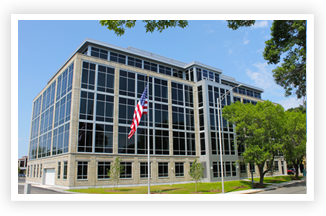
Health and wellness is permeating the office environment and it is no wonder why. Happier office spaces lead to happier, more creative employees. The productivity gained from healthy, happy employees far outweighs the time, energy and cost put into a space. With cost-savings coming into play further down the road – such as employee retention, increased productivity and employees bringing new, fresh ideas to promote business growth – it’s no wonder companies are bringing health and wellness into the office space.
The way the natural light enters the room, the way the desks and workspaces are set up, the way the conference and meeting spaces are positioned, the shape, texture and color of the furnishings placed in the space all influence our physical, emotional and mental wellbeing and ultimately our workplace performance.
Here is a short list of areas to consider:
Layout
Not all layouts are created equal. For some an open office environment may be too open with limited privacy and leading to decreased focus. For others, a cubicle model may be too formal and stuffy. Providing a space that gives multiple work styles the freedom to work in their best environment is important. The way your space is set up will subconsciously and consciously influence employee interactions, such as encouraging inter-department collaboration, idea sharing and focused concentration.
Furnishings
Simple items like furnishings can largely influence the overall environment. Shape, texture and color all play a role in our emotional responses when we enter a space. In an interview with Forbes, workplace designer for IDEO, Fetell Lee, says, “The real power of interior design in a workplace is less about trendy amenities and more about creating spaces that cultivate wellness and performance throughout the day, often in an unconscious way.” In addition to bypassing the trendy furniture, ergonomic furniture for employee wellness is key. Studies have looked at the impacts of sitting and found that standing and moving during the day improves health. Not only that, breaks and physical activity throughout the day have been shown to improve clarity, focus and subsequently productivity. Providing furniture that facilitates these work environments, such as standing desks, and keeping employees ergonomically safe is central to designing for happiness.
Light
Is there a lot of natural light in your space? Natural light is known to have a positive effect on mental, emotional and physical wellbeing. A study conducted by Cornell University’s Department of Design and Environmental Analysis found that employees seated within 10 feet of a window reported an 84% decrease in eyestrain, headaches and blurred vision. Not only that, more natural light translated to more alert employees and enhanced individual performance. Exposure to natural light has been shown to lower Seasonal Affective Disorder (SAD) and enhance circadian rhythms, which affect our limbic system and regulate our emotions. One lighting company, lists the optimal lighting for office spaces. They found that brightness, saturation and hue all play a role. Insufficient or dim lighting leads to eyestrain and drowsiness at work, while on the contrary, harsh lighting can trigger headaches and migraines. The best solution is to have flexible lighting with a dimmer to adjust the intensity and brightness based on the time and task. In addition, brighter light is known to intensify emotions, whereas low light has been found to steady emotions.
Color
Color psychologists research changes in behavior and in the body and brain when people view certain colors. The way our brain takes in color has been shown to have an impact on our behavior. Warm colors like red have an energizing effect and cool colors such as blue have a calming effect on the brain and body. The color of a space can influence productivity, creativity, health, stress levels, focus, communication and emotions. For a full chart you can read more at Connecting Elements.
Air Quality
The World Green Building Council found an 11% increase in productivity as a result of increased fresh air to the workstation. Research also shows that smell has the ability to change your brain chemistry, from boosting energy to lowering stress, to encouraging relaxation. Scents, such as citrus essential oils encourage a boost in energy, while scents such as lavender produce a calming environment. Scent, similar to color, is particular to every individual, but to be kept in mind when designing an office space around employee happiness.
Plants
Plants bring in better air quality to an office space and have been shown to have psychological benefits, improving health and mental wellness. A study by the American Chemical Society found that when a group of UK participants were moved from their grey, urban city to a suburban community surrounded by trees and other greenery, they showed indicators of increased happiness. It’s no wonder Green Walls have gained in popularity, decorating office spaces, commercial spaces and even homes to bring the outdoors in.
Layout, furnishings, light, color, air quality, and plants all play a part when designing office space for employee health and wellbeing. Mental health and wellbeing have become important factors so much so that companies can now gain a certification in it. The WELL Building Standard is focused on enhancing wellbeing and health and is becoming increasingly popular. It looks at factors such as air, water, nourishment, light, fitness, comfort, and mind.
Designing office space with employee happiness in mind can have great gains. According to the Harvard Business Review, when employees have a connection to the space, employees report more engagement in their work, more communication with their peers and a stronger connection to the company. Space has a very real impact on our physical and mental wellbeing. Spaces designed to promote wellbeing lead to a happier, healthier, more creative workforce.
Create your own office space with us. Visit our new construction, 295 Canal Street, Malden, MA 02148, easily accessible by the Orange Line near Malden Center. We are creating better places to live, work and play.


